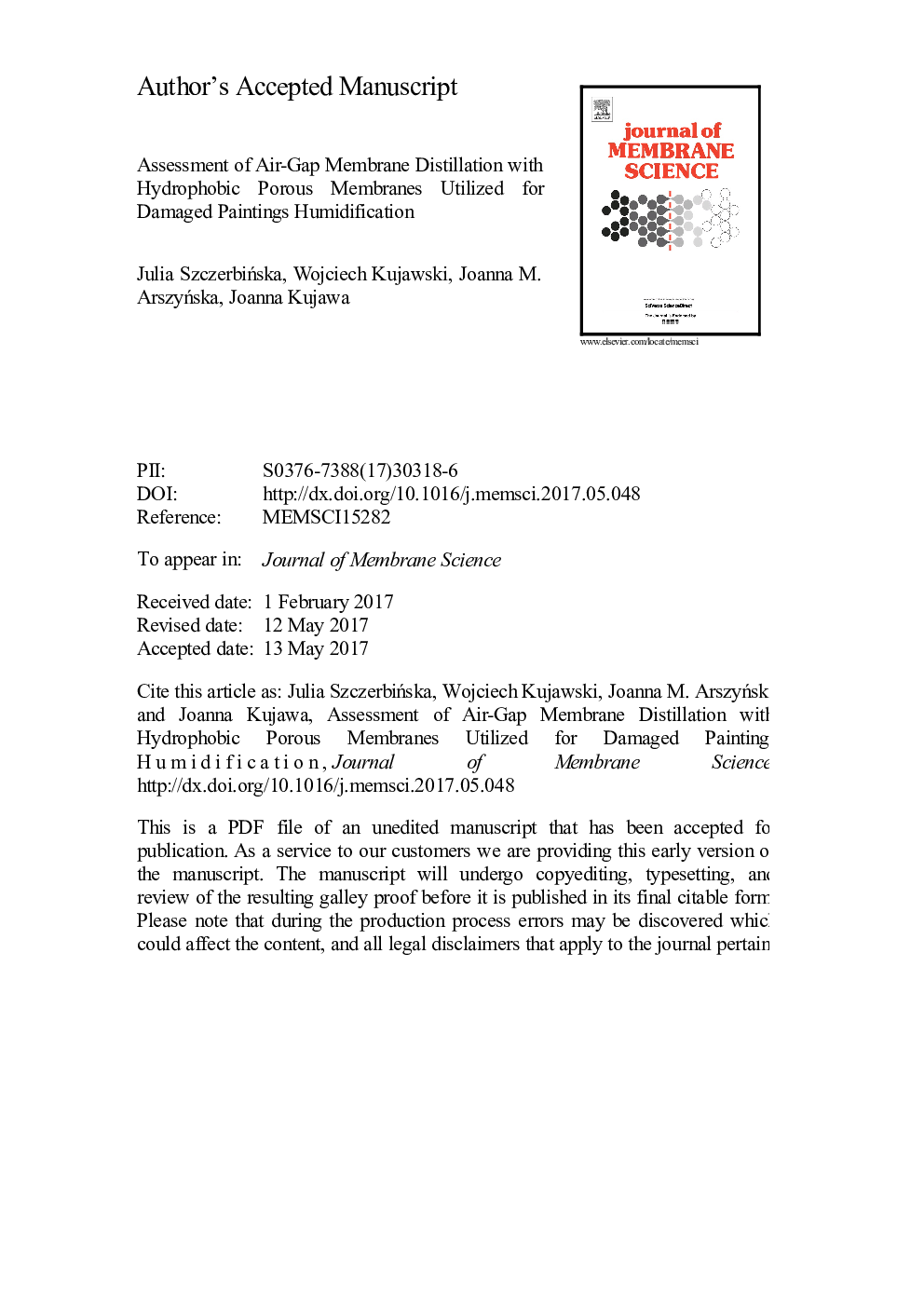| Article ID | Journal | Published Year | Pages | File Type |
|---|---|---|---|---|
| 4988743 | Journal of Membrane Science | 2017 | 29 Pages |
Abstract
Decay of paintings, i.e. cracking and lifting of the picture layers is caused mainly by harmful influence of light, temperature and fluctuations in humidity. This paper describes the application of various hydrophobic porous membranes in the paintings' humidification which is a very important element of the treatment of paintings of canvas and other historical artefacts. Five hydrophobic porous membranes made of polypropylene (PP), polyvinylidene fluoride (PVDF) and polytetrafluoroethylene (PTFE), possessing different porosity (60-85%) and average pore size (0.14â0.55 µm) were investigated. Morphology and porosity of membranes were evaluated using SEM and modified bubble point method. Surface properties of membranes were determined by contact angle, surface free energy, and AFM analysis. Subsequently, membranes were assessed in the humidification of the artificially aged paintings. Results showed that all examined hydrophobic porous membranes can be used for the conservation of destroyed paintings. The process was dependent on the time and membrane pore size. It was also found that the membrane thickness has an impact on the efficiency of the humidity gain.
Related Topics
Physical Sciences and Engineering
Chemical Engineering
Filtration and Separation
Authors
Julia SzczerbiÅska, Wojciech Kujawski, Joanna M. ArszyÅska, Joanna Kujawa,
